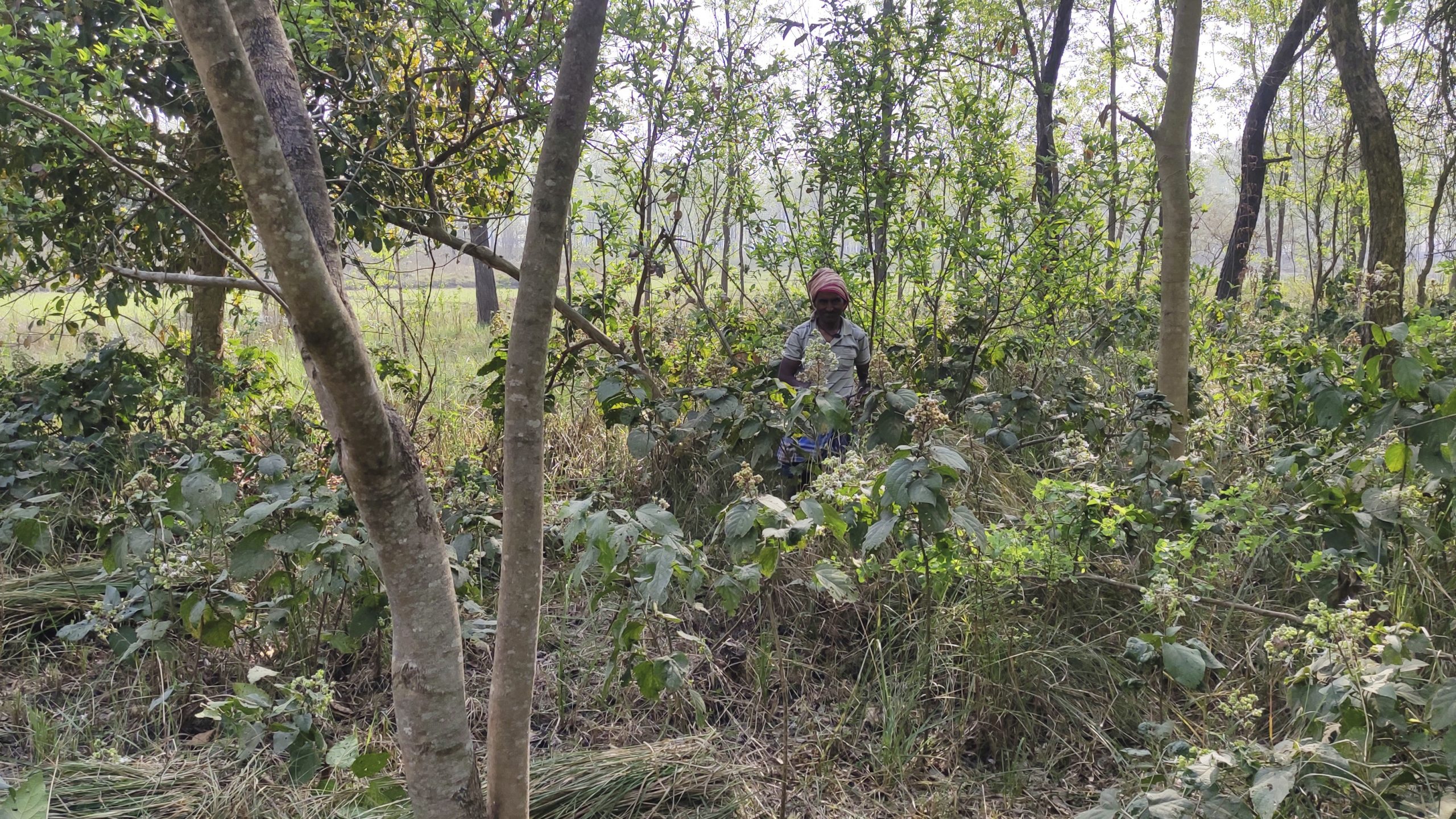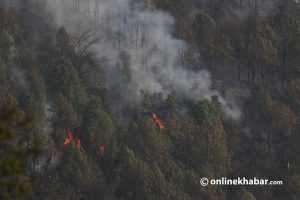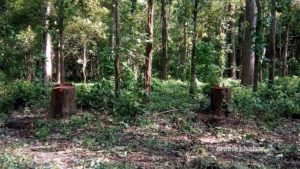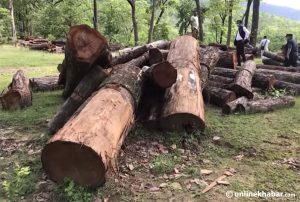Man Bahadur Tharu, a resident of Banganga municipality-8 in the Kapilvastu district of Lumbini in Nepal, is constructing a new house now. But, he is not much worried.
It is because a community forest management committee in his neighbourhood that he is a part of has assured him of its support. “Some of my neighbours had struggled to get wood for construction four years ago, but I am not worried,” he says, “I will easily get it from the Bageswori community forest. it will give me windows and doors.”
The Bageswori community forest user group has been operating a sawmill on its own for three years. The group even provides readymade tables, chairs and begs to its members, setting itself as an example of sustainable forest management in Nepal. There is another similar example in the same district; another community forest user group is promoting sustainable forest management in a different way.
The first story
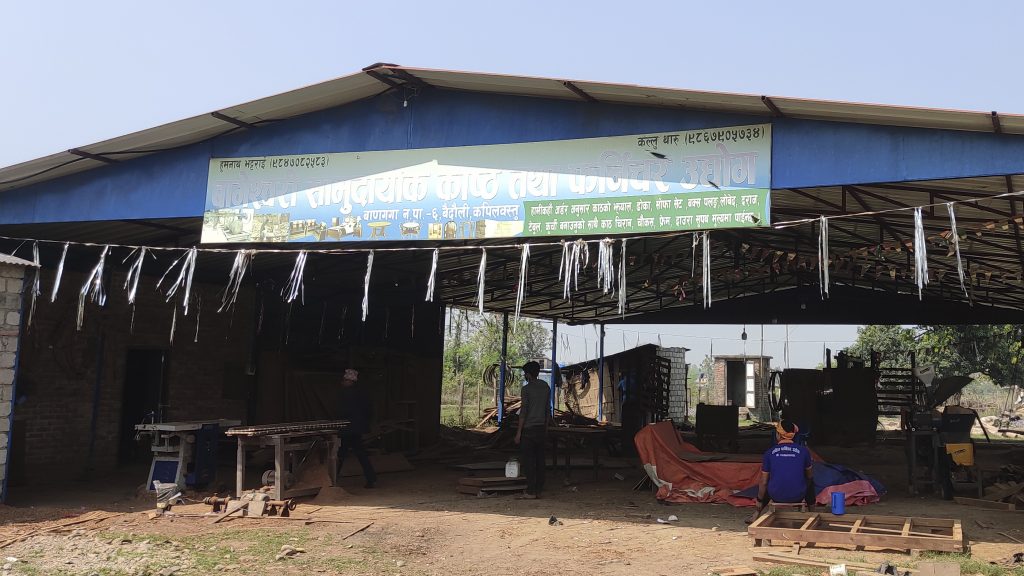
According to Kalu Tharu, the president of the Bageswori community forest, his group provides wood to its members at a discounted rate.
The user group collects timber regularly, from the trees fallen naturally, and uses it to address the needs of its members. There are around 3,000 members in the group, mostly from the indigenous Tharu and Madhesi communities.
The group had collected 420 cubic metres of fallen wood last year.
“At first, people demand our support; after that, we do cross-check,” Tharu says, “Cross-checking is necessary to stop the misuse. Some people might buy the things from us at a low rate and set later after getting hefty profits.”
The user group not only “uses” the forest products; it also conserves the forest.
Before starting conservation, the area was an open ground, where the cattle would graze. “But, the locals decided to own it, turning it into the forest,” says Hum Nath Bhattarai, that president of the Federation of Community Forestry Users Nepal (FECOFUN)’s Kapilvastu district chapter.
The second story

Ram Lakhan Yadav, a member of the Pragatishil community forest user group in the district, has five buffaloes.
For the cattle, the main source of fodder is his forest. He has to pay Rs 50 to cut grass in the forest for one season, which lasts for six months. After paying the money, the community forest user group allows him to cut grass.
Yadav says, “We get sufficient grass for all the months. We also receive firewood from the forest. It has helped in our livelihood.”
Yadav sells 20 litres of milk per day. His seven-member family has survived on the income earned by selling milk.
According to Ghanakala Neupane, the secretary of the Pargatisil community forest user group, 260 families are regular consumers of this forest. But, much more people are getting forest products from the forest. “We are also providing services to the people who are not in the group,” Neupane says, “But, they have to pay the price, which we will use in forest conservation.”
Narkumari Malla, a resident of Mayadevi rural municipality-3, says the forest has given many things she needs. “The firewood was scarce; the people would burn cattle dung,” she says, “But, now, we get firewood from the community forest.”
The Pargatisil community forest covers 60 hectares of land. It is the southernmost forest of the district located near the Indian border.
The community forest user group’s secretary Neupane says her group also provides firewood to consumers at a discounted rate based on their demand. After assessing the demand, the group finds out dried trees and chops them down.
According to Khumraj Malla, a local of the area, the local people used to cultivate this place and there were no trees. “Until 1990, it was a forest, but during the 1990 revolution, all trees got cut,” he says, “After that, the local ploughed and cultivated.” But, after some time, some locals did report the issue to the District Forest Office, which intervened and launched a conservation campaign.
“We have played a role in conserving the forest. If we had not done anything, it would have already been encroached on,” Malla says. “Initially, people did not have any idea about why they needed the forest. But, now, the user group has taught them slowly.”



